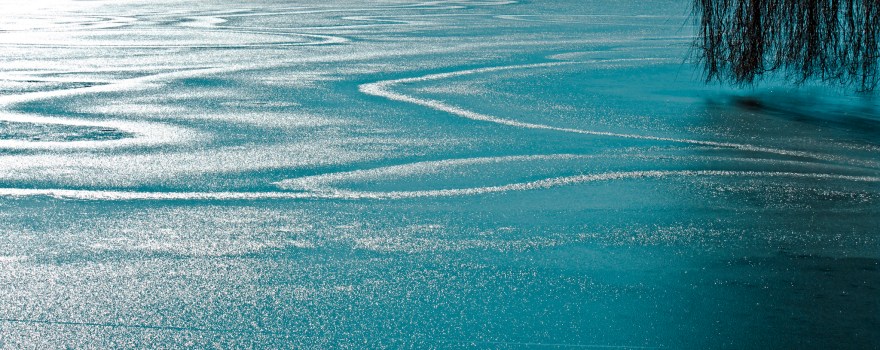Written by Robert Shibatani
Water rights, depending on jurisdiction, possess various levels of seeming indemnity and security, typically demonstrated through some standard of legally established priority. Water entitlements have been long-standing icons of local and regional industrial, economic, and political power. Over time, as water demands grew, but available supplies dwindled, they became increasingly guarded. But is all that attention and protection still validated, particularly as we look at our changing future?
Many, not all, water right holders acknowledge that there is a growing risk to their entitlements but have yet to really take proactive steps to closely evaluate these risks, let alone initiate remedies or mitigate any potential threats. Most simply choose to ignore it. In fact, some water entitlement holders seem brazenly unfettered by the whole issue. So much so, in fact, they can often be “seen” waving their permits/licenses around as if it represented some guarantee. Well, perhaps society may be able to grant some hybrid guarantee through various legal protections, but Mother Nature can override everything, even Supreme Court rulings with remarkable ease.
Consider the following scenario; a senior pre-1914 water right holder feels assured that they are “first in line”, that there are no problems with securing their water allocation from a basin with high annual yields. In fact, they are so confident that planned growth within their service area is not considered an issue and they regularly sign off on water availability assessments. Then, with increasing frequency, the water right holder realizes that their authorized April to September diversion period has provided significantly less water for the past 5-years and there is no evidence to suggest that this curtailment won’t continue. And these shortages were not initiated by the regulators, but rather by nature. Water right holders caught in this dilemma put their faith in a regulatory instrument rather than remain vigilant in keeping abreast of the science. Some may wryly say that this water right holder has gone from “first in line” to “I have lost mine”.
Hydrologists and climatologists have warned that a shifting climate, particularly in snow-dominated regions (like the Sierra Nevada, Cascades, Rocky Mountains, etc.) will see a continuing shift in the annual hydrograph of watercourses. This will affect all beneficial water users, regardless of legal priority. Mother Nature has no bias and does not recognize any legal standard or priority; hurricanes and tornados are constant reminders of that. Now the regulators may argue that water rights have always carried the proviso that interannual yields will fluctuate and that any “right” to divert is conditioned upon hydrology, for which they would be indeed correct. However, neither they nor the water right holder ever envisioned that such reductions would represent a long-term continuing trend rather than simple inter-year variability. The difference, however, is that for the regulator, it is no big deal, they can easily cast the issue aside with a blasé shrug and say, “…we told you that your right was conditioned on availability…”. For the water right holder, however, the matter takes on a very different sense of urgency (and possibly, panic).
This overall diminution in the relevancy of many current water right permits/licenses will happen gradually. It is not going to happen overnight. In one sense, therefore, one might foresee situations where water right holders would have time; time to either appeal for accommodating amendments to their permits/licenses or turn to alternative water supply sources. In areas where alternative low-cost water supplies are scarce or non-existent, this could prove a significant hardship for the affected water purveyor(s).
Varying levels of blame can be levied on water regulators since many (though not all), have had knowledge of the climate change threat, their staff and directors are well aware of the regulatory disparities and challenges associated with the current suite of allocated rights. But most have shown absolutely no interest in addressing this disparity and doing anything to address this impending water right issue. Part of the reason is that such an undertaking would be colossal and once initiated there would be no turning back. Recasting an entire institutionalized regulatory framework with every water user claiming title and every protestant chomping at the bit to reduce those consumptive allocations would tie the courts up for literally decades. No sitting director of any water regulation agency has the courage to withstand the political fallout by initiating something that contested.
Sadly, in the end, what the regulators and institutions will have failed to do, climate change will simply do for us. By forcing a continual and substantive shift of the annual hydrograph across virtually all snow-dominated environments (e.g., northern hemisphere), every single regulatory, institutional, commercial or environmental permit, license, or agreement will have to face the fact that increasing changes in the hydrological baseline for which these approvals were originally approved are ongoing. And that such continuation will very likely inevitably lead to the invalidation of their original permits. Ironically, water right holders and the regulators will likely end up in court anyways; only this time, under a much more adversarial aura.
Today’s rapidly shifting climatic regimes, particularly in regions relying on snowmelt, all but guarantees that virtually every water-related permit, license, approval and right that are, in any way, tied to specific times of the year, will eventually, and inevitably, become obsolete and thus, valueless. Given that eventuality, the question for all parties today becomes; are you willing to do anything about it now?



